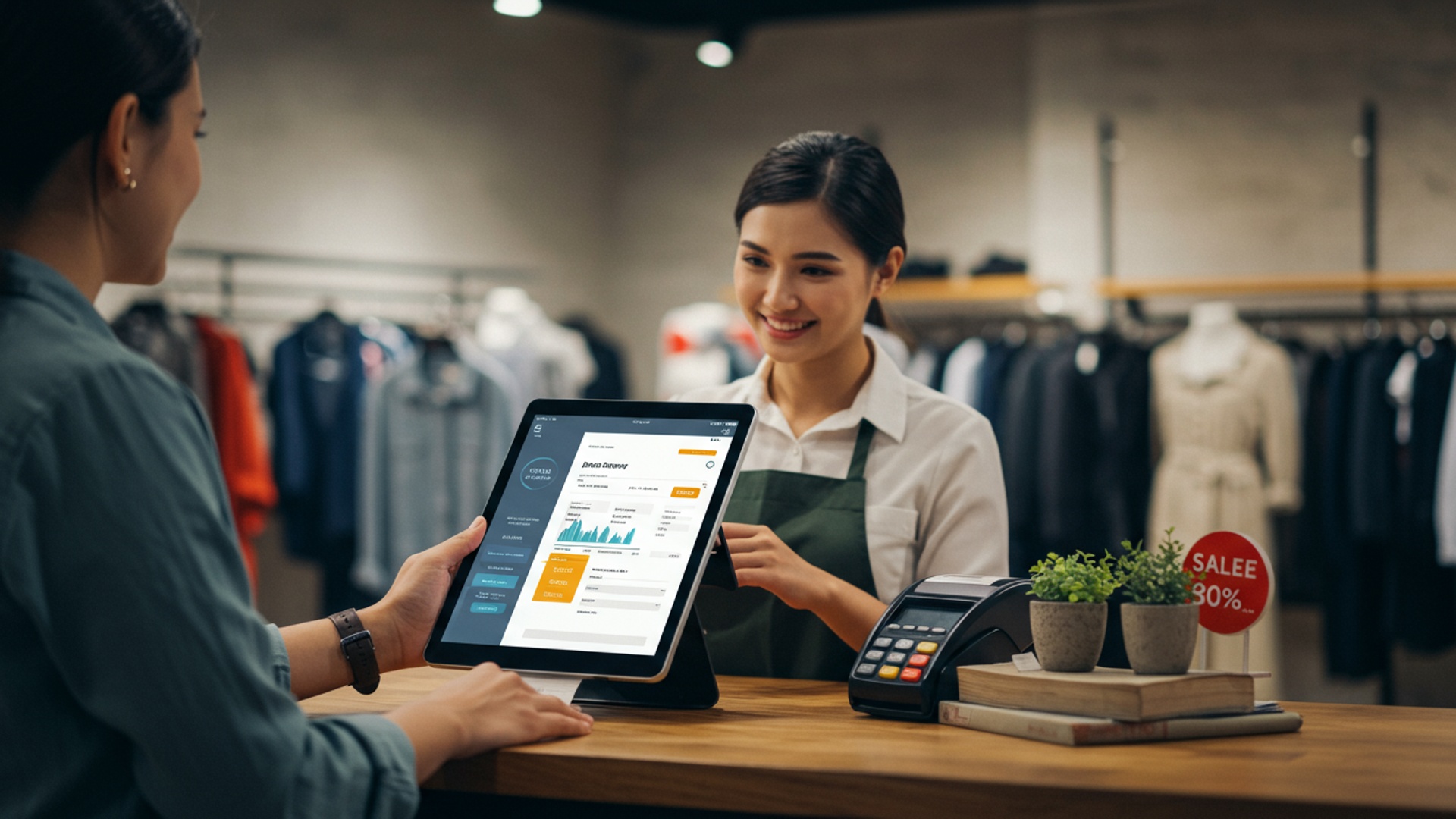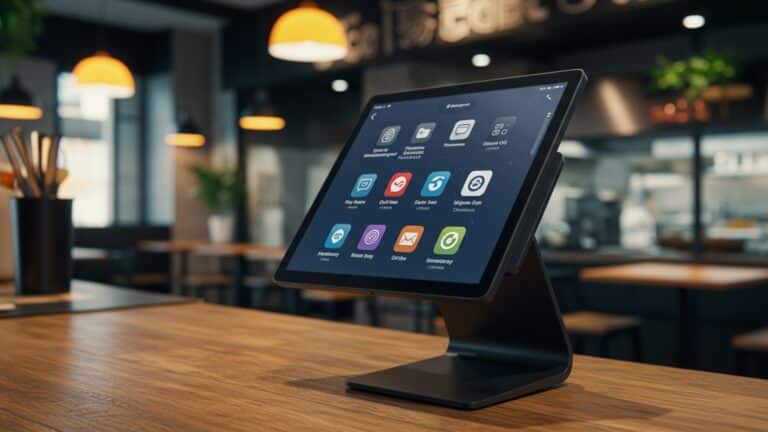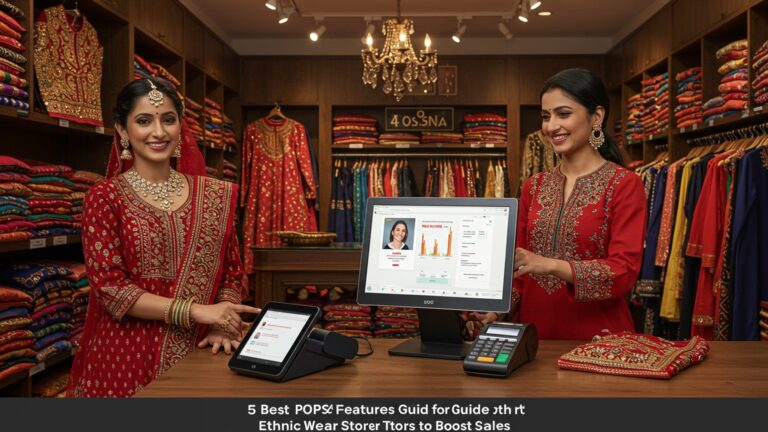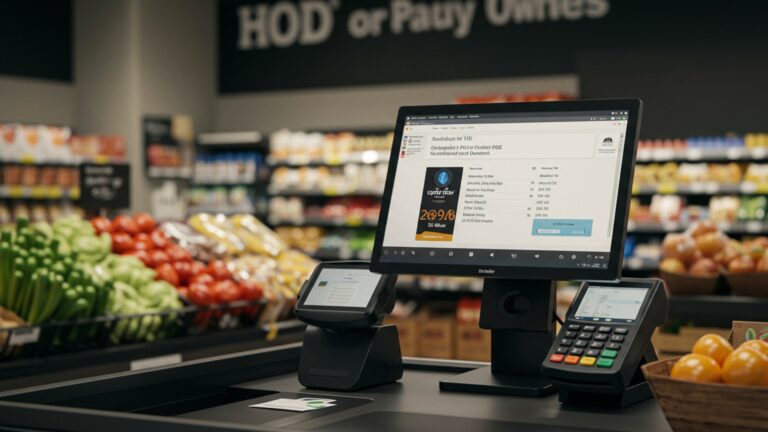Discover 9 Smart Ways Apparel Store Billing Software Boosts Retail Sales
In today’s fiercely competitive retail landscape, where customer experience dictates success, apparel stores often grapple with inefficiencies that directly impact their bottom line. Long checkout queues, inconsistent stock data. generic marketing efforts can quickly deter shoppers. Modern apparel store billing software transcends simple transaction processing, evolving into a pivotal strategic asset that empowers retailers to significantly boost sales. This advanced technology provides real-time inventory synchronization across all channels, seamlessly supporting omnichannel purchasing trends and eliminating costly stockouts. Moreover, by harnessing granular customer purchase history, it enables hyper-personalized promotions and loyalty programs, transforming one-time buyers into loyal patrons and demonstrably increasing average transaction values and overall revenue.

1. Streamlined Checkout and Enhanced Customer Experience
One of the most immediate and impactful benefits of implementing robust apparel store billing software is the dramatic improvement in the checkout process. In the fast-paced retail environment, long queues and slow transactions are major deterrents, often leading to abandoned carts and frustrated customers. Modern apparel store billing software is engineered to minimize these pain points.
- Barcode Scanning
- Automated Calculations
- Integrated Payment Processing
Sales associates can quickly scan product barcodes, instantly retrieving item details, pricing. available stock. This eliminates manual price entry errors and speeds up the entire process.
The software automatically calculates totals, applies discounts, processes taxes. handles multiple payment methods (cash, card, mobile payments). This reduces human error and accelerates transaction completion.
Seamless integration with various payment gateways means customers can pay swiftly and securely, often with contactless options, further enhancing convenience.
Imagine a busy Saturday afternoon. A customer has picked out several items and heads to the counter. With an efficient apparel store billing software, the associate scans the items in seconds, applies a loyalty discount. processes the card payment almost instantaneously. The customer is out the door feeling satisfied and is more likely to return, knowing their time is valued. A study by Forrester Research highlighted that 77% of consumers say that valuing their time is the most essential thing a company can do to provide good service. This directly translates to higher customer satisfaction and repeat business, significantly boosting sales.
2. Precision Inventory Management and Stock Optimization
Effective inventory management is the backbone of any successful apparel retail business. Poor inventory practices can lead to lost sales due to stockouts or capital tied up in slow-moving merchandise. Apparel store billing software transforms inventory management from a cumbersome task into a precise, automated process.
- Real-time Tracking
- Automated Alerts
- SKU Management
Every sale, return. new shipment is immediately updated in the system, providing an accurate, live view of stock levels across all SKUs (Stock Keeping Units).
The software can be configured to send automatic alerts when stock levels for specific items fall below a predefined threshold, prompting timely reorders. Conversely, it can flag overstocked items, helping retailers plan sales or promotions.
Detailed tracking by size, color, style. brand ensures granular control over your apparel inventory.
Comparison: Manual vs. Automated Inventory Management
| Feature | Manual Inventory | Apparel Store Billing Software |
|---|---|---|
| Accuracy | Prone to human error, frequent discrepancies | High accuracy, real-time updates |
| Speed | Time-consuming, requires physical counts | Instant updates upon transaction |
| Insights | Limited, difficult to identify trends | Detailed reports on best-sellers, slow-movers |
| Efficiency | Labor-intensive, reactive rather than proactive | Automated, proactive alerts for reordering |
By accurately tracking what’s selling and what’s not, retailers can make informed purchasing decisions, reducing the risk of dead stock and ensuring popular items are always available. This directly impacts sales by minimizing missed opportunities and optimizing cash flow.
3. Enhanced Customer Relationship Management (CRM) and Loyalty Programs
Building strong customer relationships is paramount in the competitive apparel market. Apparel store billing software often comes equipped with powerful CRM capabilities or integrates seamlessly with dedicated CRM systems, enabling retailers to grasp and engage with their customers on a deeper level.
- Customer Data Capture
- Personalized Marketing
- Loyalty Program Integration
During checkout, the system can capture valuable customer insights such as names, contact details, purchase history. even preferences (e. g. , favorite brands, sizes).
With this data, retailers can segment their customer base and send targeted promotions, birthday discounts, or recommendations based on past purchases. For instance, if a customer frequently buys designer jeans, they can receive alerts about new denim arrivals or exclusive discounts on related brands.
Many apparel store billing software solutions seamlessly integrate with loyalty programs, allowing customers to earn and redeem points, track rewards. access member-exclusive offers directly at the point of sale.
Consider “Fashionista Boutique.” Their apparel store billing software tracks that a particular customer, Sarah, frequently purchases dresses in a size 8. When a new collection of dresses arrives, the system allows the boutique to send Sarah a personalized email showcasing the new items, perhaps with a special preview discount. This targeted approach is far more effective than generic marketing, fostering loyalty and driving repeat purchases, thereby boosting sales.
4. Data-Driven Sales Insights and Performance Reporting
In today’s data-rich world, informed decision-making is crucial. Apparel store billing software transforms raw transaction data into actionable insights through comprehensive reporting features. This allows retailers to comprehend their business performance at a granular level and identify opportunities for growth.
- Sales Performance
- Inventory Turnover
- Customer Purchase Patterns
- Employee Performance
review sales by day, week, month, product category, brand, or even individual sales associate. This helps identify peak selling times, best-performing products. areas for improvement.
comprehend how quickly different products are selling, helping to optimize stocking levels and identify slow-moving items.
Discover popular product combinations, average transaction values. customer lifetime value.
Track individual sales figures and productivity, which can inform training needs or incentive programs.
“Urban Threads” uses its apparel store billing software to generate weekly sales reports. They notice a significant spike in sales of graphic tees every Friday afternoon, particularly those featuring local artists. Armed with this insight, they decide to run a “Local Artist Friday” promotion, featuring new graphic tee designs and actively promoting them on social media during that specific time slot. This data-driven strategy directly translates into increased sales and customer engagement.
5. Seamless Omnichannel Experience
The modern consumer expects a unified shopping experience, whether they are browsing online, visiting a physical store, or picking up an online order. An advanced apparel store billing software is key to creating this seamless omnichannel journey, breaking down the silos between different sales channels.
- Unified Inventory
- Click-and-Collect (BOPIS – Buy Online, Pick Up In Store)
- Centralized Customer Data
Real-time synchronization of inventory across online and offline channels. A customer buying a shirt online immediately updates the in-store stock. vice-versa.
Customers can purchase items online and pick them up at their convenience from a physical store, enhancing flexibility and customer satisfaction.
All customer interactions, purchases. preferences are consolidated, regardless of the channel. This means a sales associate can access a customer’s online purchase history when they visit the store.
Comparison: Disjointed vs. Unified Sales Channels
| Aspect | Disjointed Channels (No Integrated Software) | Unified Channels (with Apparel Store Billing Software) |
|---|---|---|
| Inventory Accuracy | Frequent discrepancies, risk of overselling online or stockouts in-store | Real-time, accurate inventory across all channels |
| Customer Experience | Frustrating, inconsistent details, lack of personalization | Smooth, consistent, personalized across all touchpoints |
| Operational Efficiency | Manual data transfer, increased errors, redundant tasks | Automated data flow, reduced manual effort, higher efficiency |
| Sales Potential | Missed sales opportunities, limited customer loyalty | Increased sales through convenience, higher customer retention |
According to a report by Harvard Business Review, omnichannel customers spend an average of 4% more on every shopping occasion in the store and 10% more online than single-channel customers. This demonstrates the direct correlation between a seamless omnichannel experience and increased retail sales.
6. Enhanced Security and Loss Prevention
Shrinkage, whether due to theft, fraud, or administrative errors, is a significant challenge for apparel retailers. Advanced apparel store billing software incorporates features designed to minimize these losses, protecting your bottom line and boosting overall profitability.
- User Permissions
- Transaction Logging
- Return Authorization
- Cash Drawer Management
Different staff members can be assigned varying levels of access and permissions. For example, only managers might be authorized to process high-value returns or apply certain discounts.
Every transaction, void, return. discount is meticulously logged with timestamps and associate IDs, creating an audit trail.
The software can flag unusual return patterns or require manager approval for returns without a receipt, helping to prevent return fraud.
Real-time tracking of cash movements and reconciliation features help prevent cashiers from skimming or making errors.
A new sales associate at “Chic Attire” attempts to process a return for an item purchased several months ago without a receipt, offering a full cash refund. The apparel store billing software immediately flags this transaction as suspicious, requiring manager override and prompting a review of the customer’s purchase history. This proactive alert system helps prevent potential fraud and ensures that store policies are consistently followed, directly safeguarding revenue.
7. Efficient Returns and Exchanges Management
Returns and exchanges are an inevitable part of apparel retail. While they can be a logistical headache, handling them efficiently and courteously is crucial for maintaining customer satisfaction and loyalty. Apparel store billing software streamlines this process, turning a potential pain point into an opportunity for positive customer interaction.
- Quick Transaction Lookup
- Automated Inventory Adjustment
- Streamlined Refunds/Credits
Even without a physical receipt, the software can quickly locate a customer’s original purchase using their name, loyalty ID, or payment method, saving time and reducing customer frustration.
Returned items are immediately added back to inventory (if sellable). exchanged items are accurately updated, maintaining precise stock levels.
The system automates the calculation of refunds, applies store credit, or processes exchanges for different items, ensuring accuracy and speed.
A seamless return process can significantly impact customer perception. A customer who has a hassle-free exchange experience is more likely to leave with a positive impression and make future purchases, even if the initial item wasn’t quite right. This contributes to long-term sales growth and brand reputation.
8. Scalability and Multi-Store Management
For apparel retailers looking to grow, expanding to multiple locations can introduce significant operational complexities. Apparel store billing software built for scalability simplifies this expansion, allowing businesses to manage multiple stores from a centralized system.
- Centralized Data
- Consistent Pricing and Promotions
- Inter-Store Transfers
- Remote Management
All sales data, inventory levels, customer data. employee records from every store are aggregated into a single database. This provides a holistic view of the entire business.
Retailers can easily implement uniform pricing, discounts. promotions across all locations, ensuring brand consistency and simplifying marketing efforts.
The software facilitates efficient stock transfers between stores, helping to balance inventory and fulfill customer requests even if an item is out of stock at one location but available at another.
Owners and managers can monitor sales performance, inventory. staff activity from any location with an internet connection, providing unprecedented control and oversight.
“Global Garb,” an apparel chain with five stores, uses a cloud-based apparel store billing software. When they launch a new seasonal collection, they can update pricing and product descriptions across all five stores simultaneously with a few clicks. If a customer at Store A wants a specific size of a jacket that’s only available at Store C, the system instantly identifies this and facilitates an inter-store transfer, preventing a lost sale and satisfying the customer.
9. Seamless Integration with Other Business Tools
The true power of modern apparel store billing software is often realized through its ability to integrate with other essential business applications. This connectivity creates a unified ecosystem that automates workflows, eliminates redundant data entry. provides a comprehensive view of business operations.
- Accounting Software (e. g. , QuickBooks, Xero)
- E-commerce Platforms (e. g. , Shopify, Magento)
- Payment Gateways
- Enterprise Resource Planning (ERP) Systems
- Marketing Automation Tools
Sales data, expenses. payroll data flow directly from the billing software to the accounting platform, simplifying bookkeeping and ensuring financial accuracy. This reduces manual reconciliation and potential errors.
Two-way synchronization of product catalogs, inventory. orders between physical stores and online shops, supporting the omnichannel strategy discussed earlier.
Secure and efficient processing of credit/debit card transactions, mobile payments. other digital payment methods.
For larger retailers, integration with an ERP system provides a holistic view of all business processes, from supply chain and manufacturing to sales and finance.
Customer data captured by the billing software can feed directly into marketing platforms, enabling more sophisticated and personalized email campaigns and promotions.
// Example of an API integration concept
// This pseudo-code illustrates how billing software might push sales data to an accounting system. function processSale(transactionData) { // ... billing software internal processing ... // After successful sale, push data to accounting system try { const accountingAPI = new AccountingSoftwareAPI('your_api_key'); accountingAPI. sendSalesEntry({ invoiceId: transactionData. invoiceId, saleAmount: transactionData. totalAmount, taxAmount: transactionData. tax, itemsSold: transactionData. items, paymentMethod: transactionData. paymentType, saleDate: new Date(). toISOString() }); console. log("Sales data successfully sent to accounting system.") ; } catch (error) { console. error("Error sending sales data to accounting system:", error); // Implement retry logic or alert system }
}
By connecting your apparel store billing software to other critical tools, you create a more efficient, accurate. intelligent operation. This integration saves time, reduces operational costs. provides deeper insights, all contributing to smarter decision-making and ultimately, increased retail sales.
Conclusion
Ultimately, embracing advanced apparel billing software isn’t merely about processing transactions faster; it’s about fundamentally transforming your entire retail ecosystem. Each of the nine strategies we explored, from seamless inventory management to personalized loyalty programs, directly funnels into enhanced sales, operational efficiency. a superior customer experience. The modern apparel landscape demands agility, exemplified by the recent boom in online-to-offline retail, where integrated billing software provides the crucial link between digital browsing and in-store purchases. My personal tip? Don’t just install the software; deeply integrate its capabilities into your sales and marketing strategy. Leverage its data to comprehend emerging trends, perhaps noting a spike in demand for sustainable activewear, allowing you to quickly adjust your inventory. I once observed a small boutique significantly boost their repeat customer rate by using their POS data to send tailored style recommendations, a level of personalization impossible with outdated systems. The future of apparel retail is undeniably data-driven and customer-centric. By equipping your store with powerful billing software, you’re not just keeping pace with competitors; you’re actively shaping a more responsive, profitable. future-ready business. This isn’t just an upgrade; it’s an investment in sustainable growth.
More Articles
How to Choose and Implement POS Software for Retail Success
How to Master POS Billing Software for Efficient Retail Operations
10 Essential Multi Outlet Clothing POS System Features for Retail Success
7 Essential Steps to Master Clothing Inventory Management Systems
How to Choose the Best Mobile POS Software for Your Business
FAQs
How does billing software actually help sell more clothes?
It boosts sales by making operations smoother, improving customer experience with faster checkouts, managing inventory better so you always have what’s in demand. enabling smart promotions. All these factors lead to happier customers and more purchases.
Can this software really stop me from running out of popular items?
Absolutely! Good billing software often includes robust inventory management. It tracks sales in real-time, alerts you when stock is low. can even help predict future demand based on past trends. This means you can reorder popular items before they completely sell out, preventing missed sales.
What about making checkout faster or better for customers?
That’s one of its biggest perks! It speeds up transactions significantly, processes various payment methods quickly. can even handle loyalty programs or gift cards seamlessly. A quick, hassle-free checkout leaves customers feeling satisfied and more likely to return.
How does it help with deals and special offers?
It makes managing promotions super easy. You can set up discounts, BOGO offers, loyalty points. seasonal sales directly in the system. It automatically applies these at checkout, ensuring accuracy and freeing up staff to focus on customer service instead of manual calculations.
Can I see what’s selling well and what’s not with this software?
Definitely. Modern billing software provides powerful reporting and analytics. You can get insights into your best-selling products, slow-moving inventory, peak sales times. even individual staff performance. This data is crucial for making informed decisions to optimize your stock and marketing efforts.
Does it make returns and exchanges less of a headache for everyone?
Yes, it streamlines the whole process. With all transaction data stored, processing returns or exchanges becomes much quicker and less prone to errors. It helps maintain accurate stock levels even after items are returned, improving overall efficiency and customer satisfaction.
Is investing in this kind of software really worth it for an apparel store?
Many retailers find it to be a game-changer. Beyond just processing transactions, it provides tools for inventory control, customer relationship management, sales analytics. staff efficiency. These combined benefits typically lead to increased sales, reduced operational costs. a much better customer experience, offering a strong return on investment.



